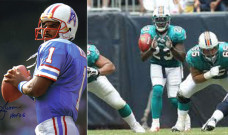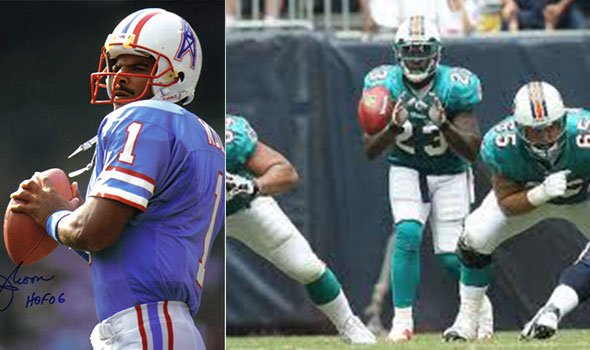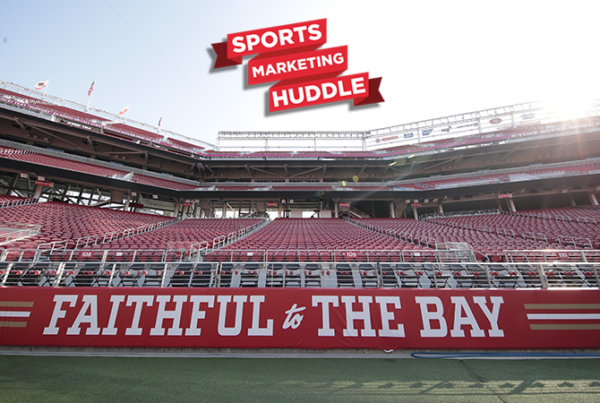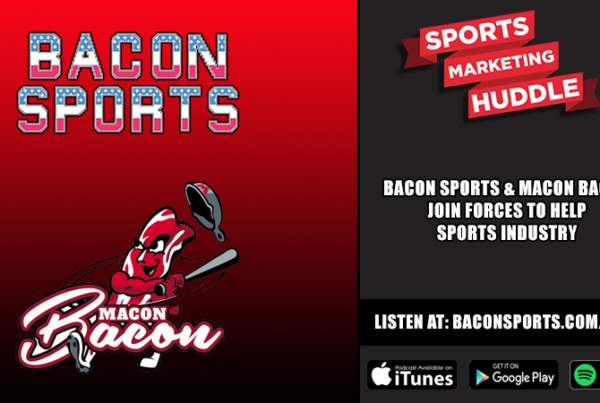
 I’m the furthest thing from a football purest. To put a fine point on it, until this last week I was rooting for an Oregon-Baylor BCS title game where the first team to score 100 points wins. I love watching exciting football, and I’m sorry, but a hard-fought defensive battle to me seems far too much like code for “this football game is pretty much unwatchable for people without a rooting interest.” Whenever I play any EA Sports football title, I can be seen simulating through most of the defensive aspects of the game, or at least running blitzes on every down in order to hopefully re-create the parts of Mutant League Football where the quarterback explodes into a pile of dust and bones.
I’m the furthest thing from a football purest. To put a fine point on it, until this last week I was rooting for an Oregon-Baylor BCS title game where the first team to score 100 points wins. I love watching exciting football, and I’m sorry, but a hard-fought defensive battle to me seems far too much like code for “this football game is pretty much unwatchable for people without a rooting interest.” Whenever I play any EA Sports football title, I can be seen simulating through most of the defensive aspects of the game, or at least running blitzes on every down in order to hopefully re-create the parts of Mutant League Football where the quarterback explodes into a pile of dust and bones.
Today, I put pop culture on the back burner for five seconds and delve a bit into football nerdery. I celebrate the offenses that lit the National Football League on fire. Sure, they could be gimmicky, and very few of them had a lasting impact on the game, but for at least one season, they caught lightning in a bottle and were the talk of the league. They may be lost to obscurity now, but today we relive their heady glory days. Hopefully, we all learn something, and you can impress your friends at the next tailgate party.
The Wildcat Offense
Let’s say politely that your team’s quarterback is not going to be setting the league on fire anytime soon. Your best offensive player is by far your running back, and hey, maybe he’s thrown a pass or two in his life. If that’s the case, perhaps this offense is for you. Speed and subterfuge are the name of the game, as the guy taking the ball off the snap is the best ball-carrier.
Miami used this offense to great success in the 2008 season, with Ronnie Brown all of a sudden becoming a viable offensive option. The league caught up the following year, and Brown was never really a big time running back again (note: somehow Ronnie Brown is still in the league! He plays for San Diego.) The offense wasn’t so much based around an offensive concept as much as a particular formation, and teams will still use it from time to time, but it has definitely lost its luster.
The Run and Shoot Offense
Mobile quarterback plus single back plus 3 and 4-wide receiver sets based off timing patterns. Sound familiar? In the 80’s, this was considered revolutionary. Now, the tenets of this offense are the basis for most NFL and college offenses. The concept was simple: if you spread out defenses with more wide receivers, there should be more room to run. The Oilers used this technique to great success, and the Bills adapted some of the same concepts when they went to four Super Bowls in the early 90’s. The biggest complaint about the offense was that it never seemed to win championships. Too bad that it completely changed the way football was played.
It begins with turning a simple truth about football on its ear, in this offense you pass to set up the run. Timing patterns and quick throws lead to deep throws which open up running lanes for a big, bruising tailback (think Jerome Bettis, or Jamal Anderson.) Now, whenever you hear an announcer telling people you need to run to set up the pass, you can smirk to yourself, secure in the knowledge that it can work both ways. This offense is the philosophical father of another favorite offensive scheme of mine, the Air Raid offense, although the Air Raid is more tailored to the college game. Just by saying “Air Raid,” somewhere Kliff Kingsbury just ass-slapped someone.
The West Coast Offense
Another concept that seemed like a desperate gimmick at first, but has evolved into a main offensive concept in today’s NFL. The West Coast offense really became popular under the Bill Walsh-coached 49ers teams of the 80’s and was run by some of the most popular offensive players of all time. Joe Montana and Jerry Rice were so adept at running this offense, that the NFL record book cries mercy every time we bring up Rice’s accomplishments. The NFL statistics for things like yards-after-catch and yards-per-attempt basically had to be invented because of the effects of this offense.
Like the run and shoot, this offense is based more on timing patterns in the receiving game than overwhelming teams with runs. However, the emphasis in this case was on getting the ball to the perimeter as quickly as possible. The screen pass, whether to the running back or to a receiver, really became a weapon in this offense, rather than the safety valve it was up until then. A lot of coaches run some West Coast concepts today, and it’s probably the most prolific offensive scheme in the NFL.
The Spread Option/Zone Read Option
Two concepts in one, but both things are basically talking about the same idea. Like the run and shoot, this offense likes to spread the receivers out over the width of the field, in order to create running lanes. The new wrinkle is that the quarterback is now a threat to run and “reads” the defense and decides whether to hand off, run, or throw. The ability of the offense to react to what the defense gives them is a change from the normal script, where the defense reacts to the offense. This can give the right offense a continual strategic advantage, and an ill-prepared defense can very soon look like a shell of its former self.
This offense is in the process of evolving at the professional level. The introduction of Chip Kelly to the NFL and the success of Colin Kaepernick in last year’s playoffs has this offense front and center, and defenses will be keying on trying to stop it this year. There are already some tinkering, introducing packaged plays, like screen passes or quick slants on the back side of a zone read option play. The main concept seems to be forcing the defense to act first, and that change has been the biggest part of the offense’s continued use and will be vital to its evolution.
The Erhardt-Perkins Ball-Control Offense
By far the oldest out of all these schemes, but still in use today because it works surprisingly well if you have the right personnel. The offense that served the 70’s Steelers so well for years, as well as teams like the 60’s Chiefs, the 90’s Broncos and Cowboys, and many other teams is based upon the time-honored tradition of putting bodies on bodies and running the ball. Vince Lombardi won with a prototype of this offense, and basically invented the term “smash-mouth football.” Lining up with two running backs, running off-tackle, and using play-action passes sparingly are the calling card of this offensive system. Bill Parcells probably still dreams about this offense when he watches the Giants nowadays, then puts a boot through his television.
While not many teams use this as a base offense anymore, the concepts of play-action passing are still used consistently. Often used plays, like the toss sweep and power, both came from this strategy. Other coaches, like Mike Shanahan, Norv Turner and Bill Belichick still use the “run to daylight” concepts that were the very basis of this offensive scheme. While not at all sexy, there’s a reason why power running games are still kicking around the NFL.
Matt Brockway is a football nerd of the highest caliber, you should probably follow him on twitter @subtlehyperbole.
GIRLS WHO LIKE SPORTS = UNICORNS. HELP US FIND UNICORNS
YOU SHOULD LIKE BACON SPORTS ON FACEBOOK HERE
OTHER ARTICLES YOU MIGHT ALSO LIKE:
- Living with your parents and football: the good and the bad
- Bacon Boys: Athletes that would replace Gatorade with Bacon
- 4 things that should be shortened like the NHL season was
- Trying to figure out what the Ultimate Warrior is saying
- Ask a Sports Chick: AI’s retirement, sports superstitions, and not drinking at bars







 Bacon Sports is a sports content & social media marketing agency that turns your audience into raving fans by creating fun and engaging videos, podcasts, and social media content.
Bacon Sports is a sports content & social media marketing agency that turns your audience into raving fans by creating fun and engaging videos, podcasts, and social media content.
